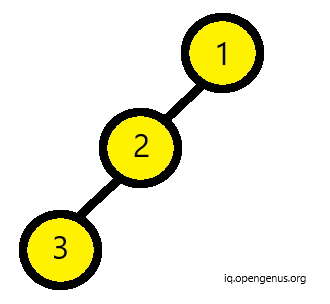
Open-Source Internship opportunity by OpenGenus for programmers. Apply now.
A binary tree can be called a skewed binary tree if all nodes have one child or no child at all. They can be of two types:
- Left Skewed Binary Tree
- Right Skewed Binary Tree
Left Skewed Binary Tree
If all nodes are having a left child or no child at all then it can be called a left skewed binary tree. In this tree all children at right side remain null.

Right Skewed Binary Tree
If all nodes are having a right child or no child at all then it can be called a right skewed binary tree. In this tree all children at left side remain null.

Implementation of Binary Tree
//definition of a node
struct node{
int value;
struct node *left,*right;
}
//function to make new node
node* newnode(int value){
node* t = new node;
t->value = value;
t->left = t->right = Null;
return(t);
}
Case 1 : Left skewed binary tree
In case of left skewed binary tree, we will insert values only in left nodes and leave all right nodes as null.
node * root= newnode(5);
root->left = newnode(8);
root->left->left = newnode(10);
The above code snippet creates a new node, that will be the root for our tree and initialises it with value 5. Then, it creates its left node with value 8 and further its left node witrh value 10.
Case 2 : Right skewed binary tree
In case of rigth skewed binary tree, we will insert values only in right nodes and leave all left nodes as null.
node * root= newnode(5);
root->right = newnode(8);
root->right->right = newnode(10);
The above code snippet creates a new node, that will be the root for our tree and initialises it with value 5. Then, it creates its right node with value 8 and further its right node witrh value 10.
This is the simple implementation for the skewed binary tree.
Happy Coding!
